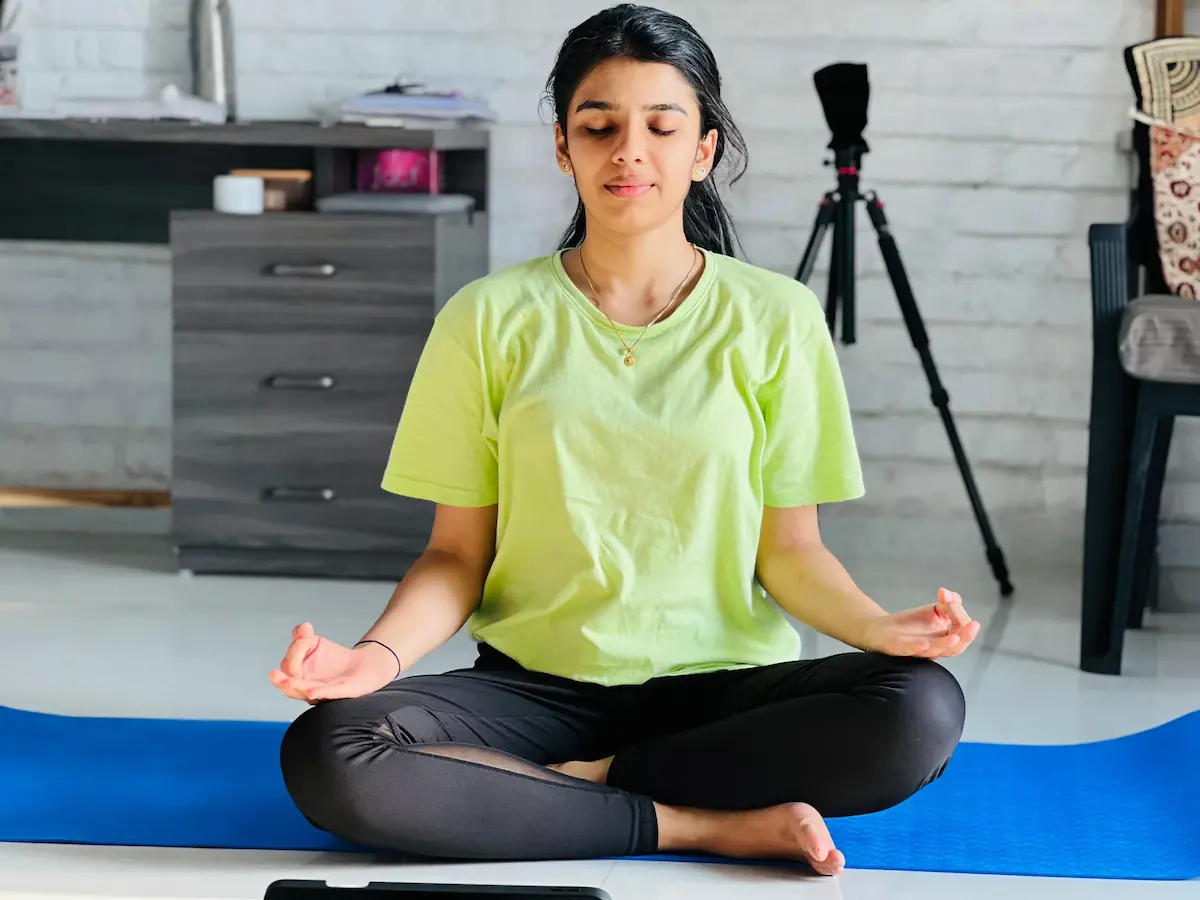Yoga offers profound benefits for both body and mind improving flexibility, strength, balance, and mental clarity. However, even the most dedicated practitioners can unknowingly fall into habits that limit their progress or lead to discomfort. Here are the five most common yoga mistakes and how you can avoid them for a safer, more rewarding practice.
The Benefits of Yoga

- Builds strength and flexibility
- Improves balance
- Relieves back pain
- Eases arthritis symptoms
- Boosts heart health
- Promotes better sleep
- Enhances mood
- Reduces stress and anxiety
1. Practicing on a Full Stomach
Why it’s a mistake:
Doing yoga right after a heavy meal can cause discomfort and sluggishness. A full stomach makes it harder to move and breathe deeply.
How to avoid:
- Wait at least 1–2 hours after eating before practicing yoga.
- If you need a snack, opt for something light and easy to digest.
2. Pushing Too Hard
Why it’s a mistake:
Trying to force yourself into advanced poses or pushing beyond your limits can lead to strain or injury. Yoga is about gradual progress, not competition.
How to avoid:
- Listen to your body’s signals.
- Modify poses as needed and progress at your own pace.
- Remember: discomfort is normal, but sharp pain is a warning sign to stop.
3. Ignoring Your Breath
Why it’s a mistake:
Holding your breath or breathing shallowly restricts oxygen flow and increases tension, making poses harder and less effective.
How to avoid:
- Focus on steady, deep breaths throughout your practice.
- Use breath to guide your movements and help you relax into poses.
4. Wearing Inappropriate Clothing
Why it’s a mistake:
Clothes that are too tight, too loose, or made from non-breathable fabrics can restrict movement and distract you from your practice.
How to avoid:
- Choose comfortable, stretchy, and moisture-wicking clothing.
- Avoid anything that bunches up or needs constant adjustment.
5. Skipping Proper Alignment
Why it’s a mistake:
Incorrect alignment can strain muscles and joints, increasing the risk of injury and reducing the effectiveness of each pose.
How to avoid:
- Pay attention to your instructor’s cues or use mirrors to check your form.
- Use props like blocks or straps when needed.
- Don’t obsess over perfection focus on what feels right for your body.
- Why Your Mind Wanders During Meditation
- Beginner Yoga Poses for Stress Relief
- Yoga vs Gym: Which is Better for Mental Health?
Frequently Asked Questions (FAQs)
1. Can I do yoga on an empty stomach?
A light stomach is best for yoga, but being completely empty can make you feel weak. A small snack like fruit 30–60 minutes before class is usually fine.
2. How do I know if I’m pushing too hard?
If you feel sharp or sudden pain, dizziness, or discomfort beyond a gentle stretch, ease up immediately. Yoga should challenge, not hurt.
3. Why is breathing so important in yoga?
Breath connects your mind and body, helps you relax, and supports movement. Proper breathing enhances every aspect of your practice.
4. What should I wear to yoga?
Wear comfortable, stretchy clothes that allow free movement and wick away sweat. Avoid anything restrictive or distracting.
5. Is it okay to use props or modify poses?
Absolutely! Props and modifications help you practice safely and effectively, especially if you’re new or have physical limitations.
Final Tip:
Yoga is a personal journey. Focus on your own progress, listen to your body, and enjoy the process. By avoiding these common mistakes, you’ll get the most out of every session and deepen your connection to the practice.

